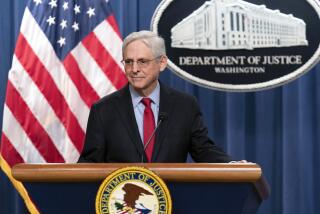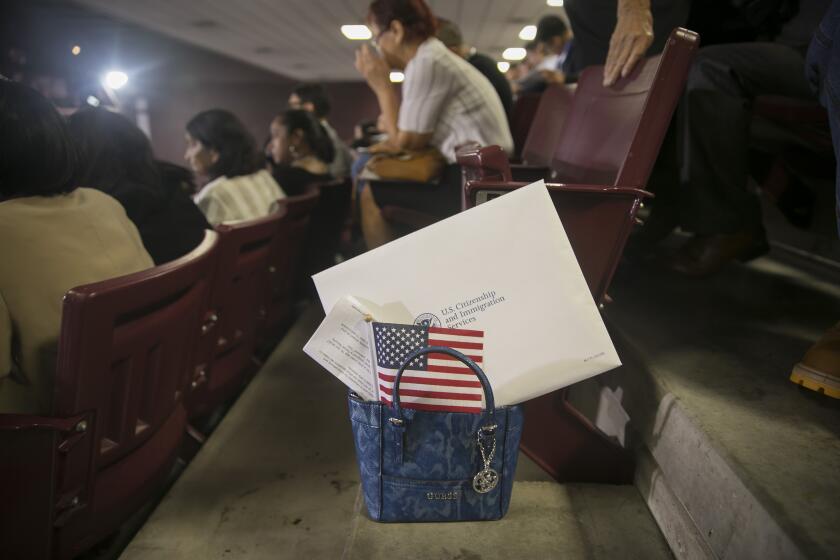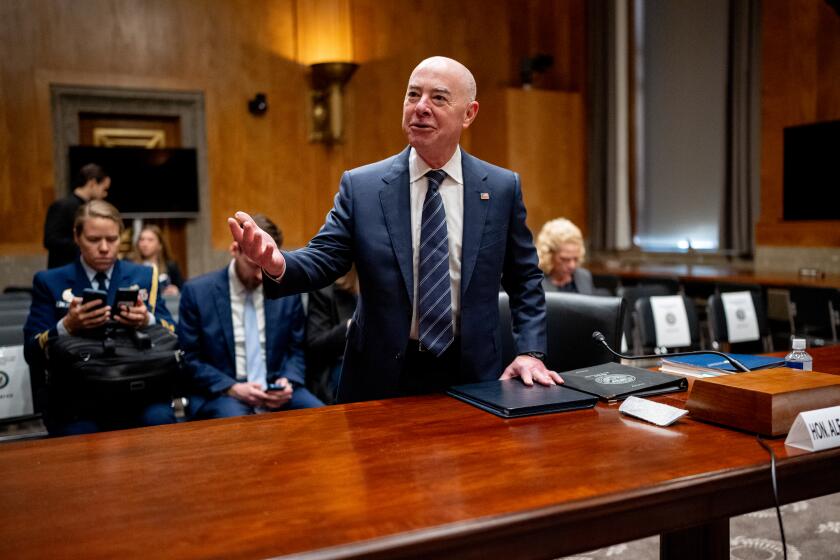Op-Ed: What Donald Trump gets with Mike Pence as VP: a yes man

Donald Trump announced Indiana Gov. Mike Pence as his vice presidential running mate.
Any moment now, Donald Trump will make a big announcement — not “You’re fired” but “You’re hired.” Trump needs a running mate, and reports suggest he’s choosing between former House Speaker Newt Gingrich and Indiana Gov. Mike Pence. Pence’s appeal, to pundits at least, is all about balance. Where Trump is impulsive, Pence is disciplined; where Trump is brash, Pence is calm; where Trump is ideologically pliable, Pence is sturdily conservative.
But as a Hoosier and one of Pence’s constituents, I think this analysis gets him exactly wrong. The Pence of 2016 isn’t Trump’s perfect counterbalance. He’s Trump’s perfect yes man.
There was a time when “yes man” was the last thing you’d call Pence. He rose to prominence as a congressman during the George W. Bush years, challenging his fellow conservatives to be pure on principle. Pence objected to Bush’s Medicare expansion and his top-down education policies, such as No Child Left Behind. He pushed for smaller-government outcomes far more consistently than other young Republicans, including Wisconsin Rep. Paul Ryan. His rigid far-right stands earned Pence private grillings from GOP leaders and even the president. But Pence never backed down. As he put it in a 2011 interview, “I was tea party before it was cool.”
This is the Pence being touted as Trump’s potential VP. But it is not the man Hoosiers have seen since we elected him in 2012. Instead, we got someone more interested in protecting his own presidential ambitions than in articulating and pursuing a consistent statewide vision. We got a governor whose administration veers between the cautious and the catastrophic.
Pence’s calculations began long before he ran for Indiana’s top office. In 2010, he hosted a private meeting with staffers, family and friends to discuss a gubernatorial bid. The group spent a long day debating what his candidacy would stand for, and Pence listened to various suggestions, including one for a bid that would have highlighted his evangelical views on abortion and same-sex marriage. In the end, though, he made it clear he would stick to a message with a wider appeal: jobs and schools. He ran a bland and careful campaign built on a “Roadmap for Indiana,” a densely footnoted pamphlet that aides passed out on the stump.
What’s clear now is that this was actually just a “Roadmap for Mike Pence’s Election.” Pence won, barely. Once he moved into the governor’s residence, he expanded his agenda, especially where it could boost his political future. Nowhere in the “Roadmap’s” 77 pages does it mention gay rights or same-sex marriage. And yet, in the spring of 2015, Pence happily — infamously — signed into law Indiana’s Religious Freedom Restoration Act, which many believed was intended to allow Hoosiers to discriminate against gays and lesbians. It seemed in part a reward for the social conservatives he’d need in 2016, whether he was running for reelection in Indiana or on a larger stage. Instead, a stunned Pence watched as it grew into a national PR disaster.
Lately it looks like Pence might not even win a second term as governor, with his in-state approval rating falling below 50%.
I always thought it fitting that Pence signed Indiana’s RFRA in a ceremony behind closed doors — just like that meeting where he laid out his campaign’s original “jobs and schools” feint. Those two private sessions, linked not by ideas or convictions but by clumsy careerism, tell you everything you need to know about the new Mike Pence. Where Congressman Pence took principled stands, Gov. Pence tried to flatter and appease various interest groups, whether they were middle-of-the-road voters (jobs and schools!) or social conservatives (religious freedom!). Too often he ended up frustrating everyone, as when his RFRA “fix” left both progressives and conservatives angry and unsatisfied.
There have been many such examples during Pence’s time as governor. In 2014, and despite campaigning on schools, he killed Indiana’s application for $80 million in federal funding for pre-K education. Pence offered vague fears about “federal intrusion”; those fears kept thousands of kids from a chance at a better start in life. Like so many of Pence’s moves, this one seemed motivated by a simple test: How would it play if he ran for higher office? (I’m the only governor in the race brave enough to reject federal handouts...)
Pence never did run for president, probably because he realized he couldn’t win after the religious freedom fracas. In fact, lately it looks like Pence might not even win a second term as governor, with his in-state approval rating falling below 50%.
That number explains why earlier this summer, Pence decided he could finally live with some federal intrusion; Indiana is now chasing those pre-K funds. (As governor, I fought for Indiana’s neediest children...)
But it also explains why Pence seems so eager to accept the VP slot, should Trump offer it. Surely there’s a better future for vice presidential nominees, even losing ones, than there is for defeated incumbent governors.
As a connoisseur of power, Trump must understand Pence’s motives. But he also must know that those motives make Pence an ideal partner: He’ll do what he’s told, even if it contradicts his actual beliefs, just so long as it’s good for the career of Mike Pence.
Craig Fehrman is working on a book about presidents and their writings. He profiled Pence for Indianapolis Monthly in 2013.
Follow the Opinion section on Twitter @latimesopinion or Facebook
ALSO
Election forecasting in the age of Trump
The Democrats just ceded economic justice to Donald Trump
More to Read
A cure for the common opinion
Get thought-provoking perspectives with our weekly newsletter.
You may occasionally receive promotional content from the Los Angeles Times.






